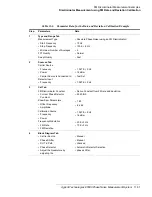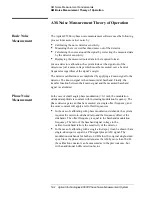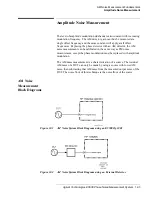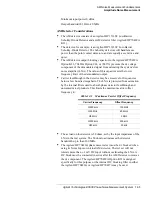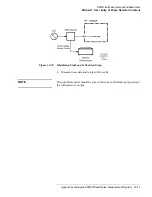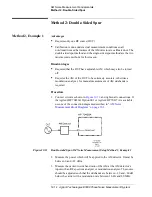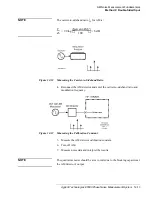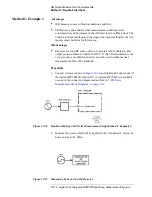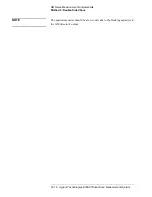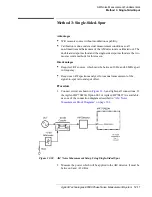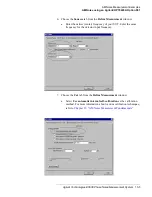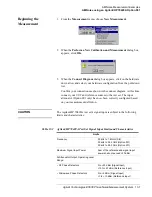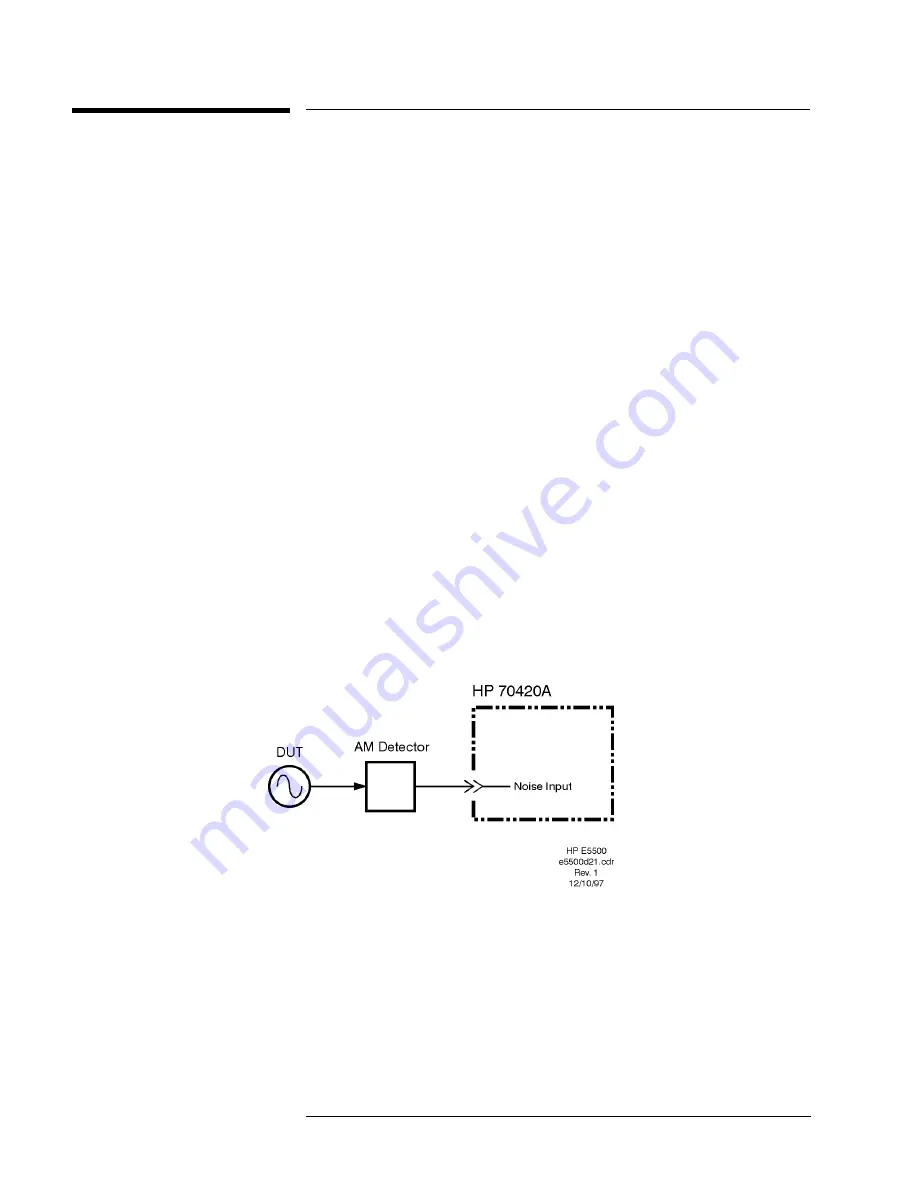
12-12
Agilent Technologies E5500 Phase Noise Measurement System
AM Noise Measurement Fundamentals
Method 2: Double-Sided Spur
Method 2: Double-Sided Spur
Method 2, Example 1
Advantages
•
Requires only one RF source (DUT)
•
Calibration is done under actual measurement conditions so all
non-linearities and harmonics of the AM detector are calibrated out. The
double-sided spur method and the single-sided-spur method are the two
most accurate methods for this reason.
Disadvantages
•
Required that the DUT have adjustable AM which may also be turned
off.
•
Requires the AM of the DUT to be extremely accurate; otherwise a
modulation analyzer, for manual measurement of AM sidebands is
required.
Procedure
1. Connect circuit as shown in
, and tighten all connections. If
the Agilent/HP 70420A Option 001 or Agilent/HP 70427A is available,
use one of the connection diagrams described in
Measurement Block Diagrams” on page 12-3
.
Figure 12-11
Double-sided Spur AM Noise Measurement Setup Method 1, Example 1
2. Measure the power which will be applied to the AM detector. It must be
between 0 and +23 dBm.
3. Measure the carrier-to-sideband ratio of the AM at the AM detector’s
input with an RF spectrum analyzer or modulation analyzer. The source
should be adjusted such that the sidebands are between –30 and –60 dB
below the carrier with a modulation rate between 10 Hz and 20 MHz.


